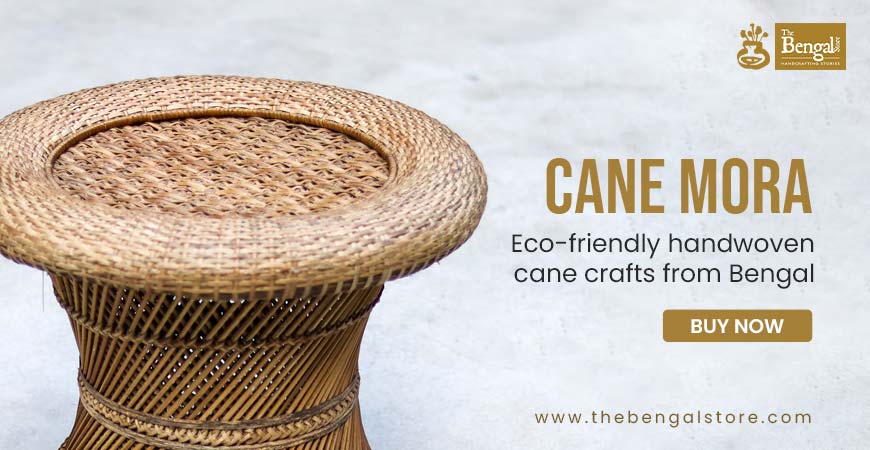Ivory’s Echo in Stone: Murshidabad’s Reinvented Craft - GetBengal Story

GThe Bhagirathi once flowed past a sleepy settlement called Mukhsudabad, its banks wrapped in forests, far removed from the grandeur of Delhi’s imperial court or the glittering capital of Bengal, Dhaka. Around 1704, Murshid Quli Khan arrived, shifted the capital from Dhaka, and gave the place a new name—Murshidabad. From that moment, the city was destined for greatness. Under the Nawabs, Murshidabad became a centre of art and craft, its fame carried on the delicate brilliance of ivory.
The ivory artisans, who migrated from Dhaka to Jiaganj and Cossimbazar, found patronage and respect. In their homes, elephant tusks were transformed into sculptures, ornaments, and objects of desire. Soon the craft spread through Berhampore and beyond, captivating merchants who came to Cossimbazar to trade. They placed orders, artisans delivered, and soon ivory from Murshidabad travelled far beyond Bengal. After the Battle of Plassey in 1757, it even reached Europe, carried by the British. Ivory became the pride of aristocratic homes, a symbol of luxury and taste.

But time changed everything. The splendour faded, and by the late twentieth century, ivory lost its place. The global ivory trade ban of 1989, followed by India’s Wildlife Protection Act of 1992, brought the industry to a standstill. By the 1990s, the workshops grew silent, tools lay forgotten, and families who had lived by the craft for generations abandoned their heritage. Yet not all turned away. Some clung to tradition, searching for a way to preserve it within the limits of the law.
Among them was Sourin Bhaskar of Murshidabad. He comes from a family of ivory artists whose legacy stretches back three or four generations. His father and grandfather’s creations still rest in museums like the Victoria Memorial, Hyderabad’s collections, and the Hazarduari Palace in Murshidabad. Sourin himself never worked with ivory. By the time he was old enough to learn, the material was already banned. But the desire to continue the family’s art remained. He found an alternative in Korean stone, a man-made material with the same pale sheen as ivory, but born of no cruelty.

Imported in blocks from Korea, arriving via Mumbai or Chennai, the stone becomes Sourin’s canvas. With about a dozen artisans—many trained by his father—he sketches, carves, and polishes it into ornaments and figurines. At first glance, the jewellery looks exactly like ivory, gleaming with a soft whiteness, though it carries none of its burden. Sourin smiles as he holds up a pendant. “People think it’s ivory when they see it. But it’s not. It’s something better—it’s ethical.”
His workshop hums with life. From bangles to earrings, pendants to statues, every piece carries the grace of tradition. Sometimes there are twenty or more designs of bangles, a dozen styles of earrings. Prices range from three hundred rupees to as high as one and a half lakh, depending on the intricacy. “The demand is good,” he says. “And the best part is—it lasts forever. It never loses its shine.” His creations sell both offline and online, though local buyers still make up most of his clientele.
Recognition has followed his persistence. Sourin has won multiple district awards and twice received the State Award from the Government of West Bengal. He has even built his own space, the Merry Handicraft Art Gallery, where his work lives on. “Many in my family chose other professions,” he admits, “but I stayed with the craft. I love it. This work is my life—and my fight is to keep it alive.”

The history of ivory craft in Bengal stretches back to antiquity, its traces found in the Ramayana, the Arthashastra, the Kamasutra, and in the ruins of Harappa and Mohenjodaro. Once centred in Sylhet and Tripura, ivory artisans shifted to Dhaka and later to Murshidabad with the rise of Murshid Quli Khan. What began as a mark of luxury centuries ago now survives in a new medium, a heritage reborn through invention.
Today, as the world surges forward with technology and artificial intelligence, it is artisans like Sourin who keep alive the pulse of history. The ivory may be gone, but the art remains—shining, reimagined, and alive in the glow of Korean stone.
Note: Translated by Krishnendu Mitra
To read the original Bengali article, please click here:











